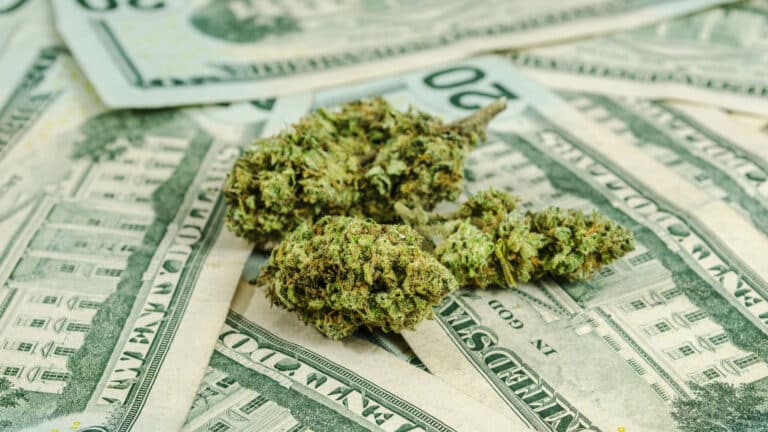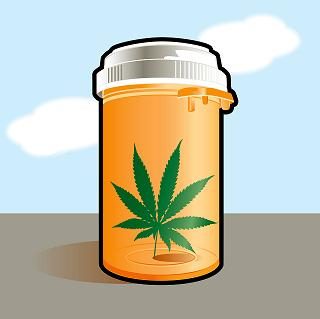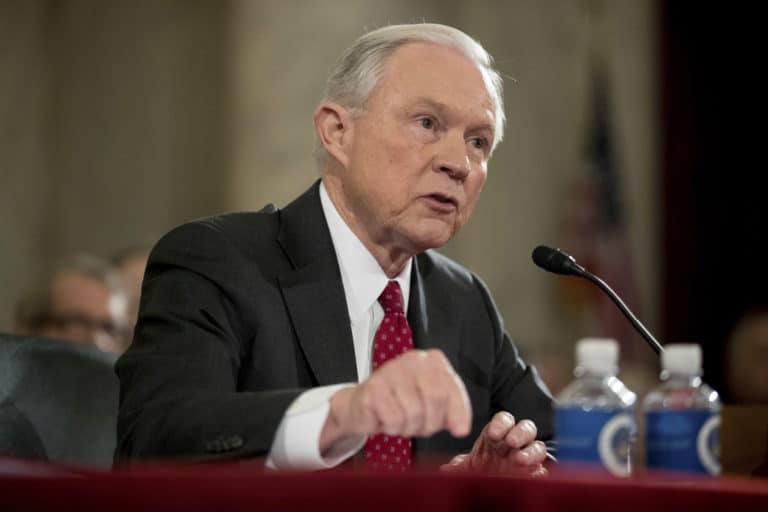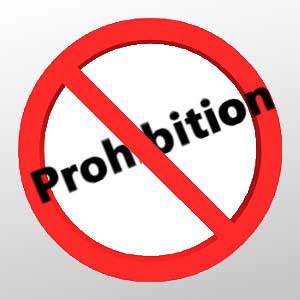 By Phillip Smith, StopTheDrugWar.org
By Phillip Smith, StopTheDrugWar.org
In some ways, 2012 has been a year of dramatic, exciting change in drug policy, as the edifice of global drug prohibition appears to crumble before our eyes. In other ways it is still business as usual in the drug war. Marijuana prohibition is now mortally wounded, but there were still three-quarters of a million pot arrests last year. The American incarceration mania appears to be running its course, but drug arrests continue to outnumber any other category of criminal offense. There is a rising international clamor for a new drug paradigm, but up until now, it’s just talk.
The drug prohibition paradigm is trembling, but it hasn’t collapsed yet. — we are on the cusp of even more interesting times. Below, we look at the biggest drug policy stories of 2012 and peer a bit into the future:
1. Colorado and Washington Legalize Marijuana!
Voters in Colorado and Washington punched an enormous and historic hole in the wall of marijuana prohibition in November. While Alaska has for some years allowed limited legal possession in the privacy of one’s home, thanks to the privacy provisions of the state constitution, the November elections marked the first time voters in any state have chosen to legalize marijuana. This is an event that has made headlines around the world, and for good reason — it marks the repudiation of pot prohibition in the very belly of the beast.
And it isn’t going away. The federal government may or may not be able to snarl efforts by the two states to tax and regulate legal marijuana commerce, but few observers think it can force them to recriminalize marijuana possession. It’s now legal to possess up to an ounce in both states and to grow up to six plants in Colorado and — barring a sudden reversal of political will in Washington or another constitutional amendment in Colorado — it’s going to stay that way. The votes in Colorado and Washington mark the beginning of the end for marijuana prohibition.
2. Nationally, Support for Marijuana Legalization Hits the Tipping Point
If Colorado and Washington are the harbingers of change, the country taken as a whole is not far behind, at least when it comes to public opinion. All year, public opinion polls have showed support for marijuana legalization hovering right around 50%, in line with last fall’s Gallup poll that showed steadily climbing support for legalization and support at 50% for the first time. A Gallup poll this month showed a 2% drop in support, down to 48%, but that’s within the margin of error for the poll, and it’s now a downside outlier.
Four other polls released this month demonstrate a post-election bump for legalization sentiment. Support for legalization came in at 47%, 51%, 54%, and 57%, including solid majority support in the West and Northeast. The polls also consistently find opposition to legalization strongest among older voters, while younger voters are more inclined to free the weed.
As Quinnipiac pollster Peter Brown put it after his survey came up with 51% support for legalization, “This is the first time Quinnipiac University asked this question in its national poll so there is no comparison from earlier years. It seems likely, however, that given the better than 2-1 majority among younger voters, legalization is just a matter of time.”
3. Global Rejection of the Drug War
International calls for alternatives to drug prohibition continued to grow ever louder this year. Building on the work of the Latin American Commission on Drugs and Democracy and the Global Commission on Drug Policy, the voices for reform took to the stage at global venues such as the Summit of the Americas in Cartagena, Colombia, in April, the International AIDS Conference in Washington in July, and at the United Nations General Assembly in September.
While calls for a new paradigm came from across the globe, including commissions in Australia and the United Kingdom, this was the year of the Latin American dissidents. With first-hand experience with the high costs of enforcing drug prohibition, regional leaders including Colombian President Santos, Guatemalan President Perez Molina, Costa Rican President Chinchilla, and even then-Mexican President Calderon all called this spring for serious discussion of alternatives to the drug war, if not outright legalization. No longer was the critique limited to former presidents.
That forced US President Obama to address the topic at the Summit of the Americas and at least acknowledge that “it is entirely legitimate to have a conversation about whether the laws in place are doing more harm than good in certain places” before dismissing legalization as a policy option. But the clamor hasn’t gone away — instead, it has only grown louder — both at the UN in the fall and especially since two US states legalized marijuana in November.
While not involved in the regional calls for an alternative paradigm, Uruguayan President Mujica made waves with his announcement of plans to legalize the marijuana commerce there (possession was never criminalized). That effort appears at this writing to have hit a bump in the road, but the proposal and the reaction to it only added to the clamor for change.
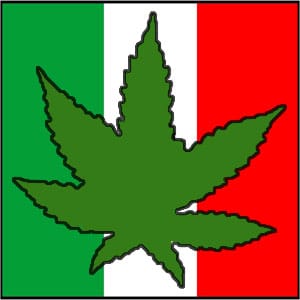 4. Mexico’s Drug War: The Poster Child for Drug Legalization
4. Mexico’s Drug War: The Poster Child for Drug Legalization
Mexico’s orgy of prohibition-related violence continues unabated with its monstrous death toll somewhere north of 50,000 and perhaps as high as 100,000 during the Calderon sexenio, which ended this month. Despite all the killings, despite Calderon’s strategy of targeting cartel capos, despite the massive deployment of the military, and despite the hundreds of millions of dollars in US aid for the military campaign, the flow of drugs north and guns and money south continues largely unimpeded and Mexico — and now parts of Central America, as well — remain in the grip of armed criminals who vie for power with the state itself.
With casualty figures now in the range of the Iraq or Afghanistan wars and public safety and security in tatters, Calderon’s misbegotten drug war has become a lightning rod for critics of drug prohibition, both at home and around the world. In the international discussion of alternatives to the status quo — and why we need them — Mexico is exhibit #1.
And there’s no sign things are going to get better any time soon. While Calderon’s drug war may well have cost him and his party the presidency (and stunningly returned it to the old ruling party, the PRI, only two elections after it was driven out of office in disgrace), neither incoming Mexican President Enrique Pena Nieto nor the Obama administration are showing many signs they are willing to take the bold, decisive actions — like ending drug prohibition — that many serious observers on all sides of the spectrum say will be necessary to tame the cartels.
The Mexican drug wars have also sparked a vibrant and dynamic civil society movement, the Caravan for Peace and Justice, led by poet and grieving father Javier Sicilia. After crisscrossing Mexico last year, Sicilia and his fellow Mexican activists crossed the border this summer for a three-week trek across the US, where their presence drew even more attention to the terrible goings on south of the border.
 5. Medical Marijuana Continues to Spread, Though the Feds Fight Back
5. Medical Marijuana Continues to Spread, Though the Feds Fight Back
Eighteen states and the District of Columbia have now legalized the use of marijuana for medical purposes, and while there was only one new one this year, this has been a year of back-filling. Medical marijuana dispensaries have either opened or are about to open in a number of states where it has been legal for years but delayed by slow or obstinate elected officials (Arizona, New Jersey, Washington, DC) or in states that more recently legalized it (Massachusetts).
None of the newer medical marijuana states are as wide open as California, Colorado, or Montana (until virtual repeal last year), as with each new state, the restrictions seem to grow tighter and the regulation and oversight more onerous and constricting. Perhaps that will protect them from the tender mercies of the Justice Department, which, after two years of benign neglect, changed course last year, undertaking concerted attacks on dispensaries and growers in all three states. That offensive was ongoing throughout 2012, marked by federal prosecutions and medical marijuana providers heading to federal prison in Montana. While federal prosecutions have been less resorted to in California and Colorado, federal raids and asset forfeiture threat campaigns have continued, resulting in the shuttering of dozens of dispensaries in Colorado and hundreds in California. There is no sign of a change of heart at the Justice Department, either.
6. The Number of Drug War Prisoners is Decreasing
The Bureau of Justice Statistics announced recently that the number of people in America’s state and federal prisons had declined for the second year in a row at year’s end 2011. The number and percentage of drug war prisoners is declining, too. A decade ago, the US had nearly half a million people behind bars on drug charges; now that number has declined to a still horrific 330,000 (not including people doing local jail time). And while a decade ago, the percentage of people imprisoned for drug charges was somewhere between 20% and 25% of all prisoners, that percentage has now dropped to 17%.
That decline is mostly attributable to sentencing reforms in the states, which, unlike the federal government, actually have to balance their budgets. Especially as economic hard times kicked in in 2008, spending scarce taxpayer resources on imprisoning nonviolent drug offenders became fiscally and politically less tenable. The passage of the Proposition 36 “three strikes” sentencing reform in California in November, which will keep people from being sentenced to up to life in prison for trivial third offenses, including drug possession, is but the latest example of the trend away from mass incarceration for drug offenses.
The federal government is the exception. While state prison populations declined last year (again), the federal prison population actually increased by 3.1%. With nearly 95,000 drug offenders doing federal time, the feds alone account for almost one-third of all drug war prisoners.
President Obama could exercise his pardon power by granting clemency to drug war prisoners, but it is so far a power he has been loathe to exercise. An excellent first candidate for presidential clemency would be Clarence Aaron, the now middle-aged black man who has spent the past two decades behind bars for his peripheral role in a cocaine deal, but activists in California and elsewhere are also calling for Obama to free some of the medical marijuana providers now languishing in federal prisons. The next few days would be the time for him to act, if he is going to act this year.
7. But the Drug War Juggernaut Keeps On Rolling, Even if Slightly Out of Breath
According to annual arrest data released this summer by the FBI, more than 1.53 million people were arrested on drug charges last year, nearly nine out of ten of them for simple possession, and nearly half of them on marijuana charges. The good news is that is a decline in drug arrests from 2010. That year, 1.64 million people were arrested on drug charges, meaning the number of overall drug arrests declined by about 110,000 last year. The number of marijuana arrests is also down, from about 850,000 in 2010 to about 750,000 last year.
But that still comes out to a drug arrest every 21 seconds and a marijuana arrest every 42 seconds, and no other single crime category generated as many arrests as drug law violations. The closest challengers were larceny (1.24 million arrests), non-aggravated assaults (1.21 million), and DWIs (1.21 million). All violent crime arrests combined totaled 535,000, or slightly more than one-third the number of drug arrests.
The war on drugs remains big business for law enforcement and prosecutors.
 8. And So Does the Call to Drug Test Public Benefits Recipients
8. And So Does the Call to Drug Test Public Benefits Recipients
Oblivious to constitutional considerations or cost-benefit analyses, legislators (almost always Republican) in as many as 30 states introduced bills that would have mandated drug testing for welfare recipients, people receiving unemployment benefits, or, in a few cases, anyone receiving any public benefit, including Medicaid recipients. Most would have called for suspicionless drug testing, which runs into problems with that pesky Fourth Amendment requirement for a search warrant or probable cause to undertake a search, while some attempted to get around that obstacle by only requiring drug testing upon suspicion. But that suspicion could be as little as a prior drug record or admitting to drug use during intake screening.
Still, when all the dust had settled, only three states — Georgia, Oklahoma, and Tennessee — actually passed drug testing bills, and only Georgia’s called for mandatory suspicionless drug testing of welfare recipients. Bill sponsors may have been oblivious, but other legislators and stakeholders were not. And the Georgia bill is on hold, while the state waits to see whether the federal courts will strike down the Florida welfare drug testing bill on which it is modeled. That law is currently blocked by a federal judge’s temporary injunction.
It wasn’t just Republicans. In West Virginia, Democratic Gov. Roy Tomblin used an executive order to impose drug testing on applicants to the state’s worker training program. (This week came reports that only five of more than 500 worker tests came back positive.) And the Democratic leadership in the Congress bowed before Republican pressures and okayed giving states the right to impose drug testing requirements on some unemployment recipients in return for getting an extension of unemployment benefits.
This issue isn’t going away. Legislators in several states, including Indiana, Ohio, Texas, and West Virginia have already signaled they will introduce similar bills next year, and that number is likely to increase as solons around the country return to work.
9. The US Bans New Synthetic Drugs
In July, President Obama signed a bill banning the synthetic drugs known popularly as “bath salts” and “fake weed.” The bill targeted 31 specific synthetic stimulant, cannabinoid, and hallucinogenic compounds. Marketed under brand names like K2 and Spice for synthetic cannabinoids and under names like Ivory Wave, among others, for synthetic stimulants, the drugs have become increasingly popular in recent years. The drugs had previously been banned under emergency action by the DEA.
The federal ban came after more than half the states moved against the new synthetics, which have been linked to a number of side effects ranging from the inconvenient (panic attacks) to the life-threatening. States and localities continue to move against the new drugs, too.
While the federal ban demonstrates that the prohibitionist reflex is still strong, what is significant is the difficulty sponsors had in getting the bill passed. Sen. Rand Paul (R-KY) put a personal hold on the bill until mandatory minimum sentencing requirements were removed and also argued that such efforts were the proper purview of the states, not Washington. And for the first time, there were a substantial number of Congress members voting “no” on a bill to create a new drug ban.
10. Harm Reduction Advances by Fits and Starts, At Home and Abroad
Harm reduction practices — needle exchanges, safer injection sites, and the like — continued to expand, albeit fitfully, in both the US and around the globe. Faced with a rising number of prescription pain pill overdoses in the US — they now outnumber auto accident fatalities — lawmakers in a number of states have embraced “911 Good Samaritan” laws granting immunity from prosecution. Since New Mexico passed the first such law in 2007, nine others have followed. Sadly, Republican Gov. Chris Christie vetoed the New Jersey bill this year.
Similarly, the use of the opioid antagonist naloxone, which can reverse overdoses and restore normal breathing in minutes, also expanded this year. A CDC report this year that estimated it had saved 10,000 lives will only help spread the word.
There has been movement internationally as well this year, including in some unlikely places. Kenya announced in June that it was handing out 50,000 syringes to injection drug users in a bid to reduce the spread of AIDS, and Colombia announced in the fall plans to open safe consumption rooms for cocaine users in Bogota. That’s still a work in progress.
Meanwhile, the UN Commission on Narcotic Drugs unanimously supported a resolution calling on the World Health Organization and other international bodies to promote measures to reduce overdose deaths, including the expanded use of naloxone; Greece announced it was embracing harm reduction measures, including handing out needles and condoms, to fight AIDS; long-awaited Canadian research called for an expansion of safe injection sites to Toronto and Ottawa; and Denmark first okayed safe injection sites in June, then announced it is proposing that heroin in pill form be made available to addicts. Denmark is one of a handful of European countries that provide maintenance doses of heroin to addicts, but to this point, the drug was only available for injection. France, too, announced it was going ahead with safe injection sites, which could be open by the time you read this.
This has been another year of slogging through the mire, with some inspiring victories and some oh-so-hard-fought battles, not all of which we won. But after a century of global drug prohibition, the tide appears to be turning, not least here in the US, prohibition’s most powerful proponent. There is a long way to go, but activists and advocates can be forgiven if they feel like they’ve turned a corner. Now, we can put 2012 to bed and turn our eyes to the year ahead.
Article From StoptheDrugWar.org - Creative Commons Licensing – Donate


